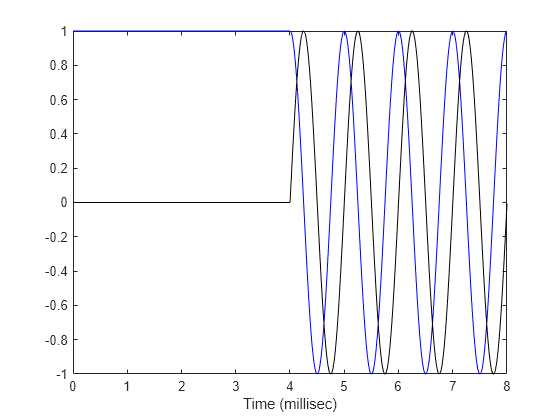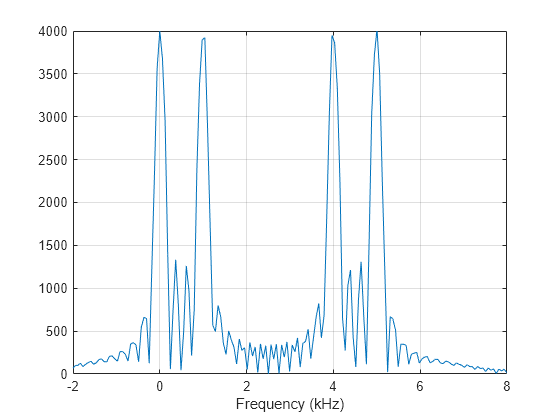step
System object: phased.MFSKWaveform
Namespace: phased
Samples of continuous MFSK waveform
Syntax
Y = step(sMFSK)
Description
Note
Starting in R2016b, instead of using the step method
to perform the operation defined by the System object™, you can
call the object with arguments, as if it were a function. For example, y
= step(obj,x) and y = obj(x) perform
equivalent operations. When the only argument to the step method
is the System object itself, replace y = step(obj) by y
= obj().
Y = step(sMFSK) returns samples of the
MFSK waveform in a N-by-1 complex valued column
vector, Y.
Note
The object performs an initialization the first time the object is executed. This
initialization locks nontunable properties
and input specifications, such as dimensions, complexity, and data type of the input data.
If you change a nontunable property or an input specification, the System object issues an error. To change nontunable properties or inputs, you must first
call the release method to unlock the object.
Input Arguments
Output Arguments
Examples
Version History
Introduced in R2015a

